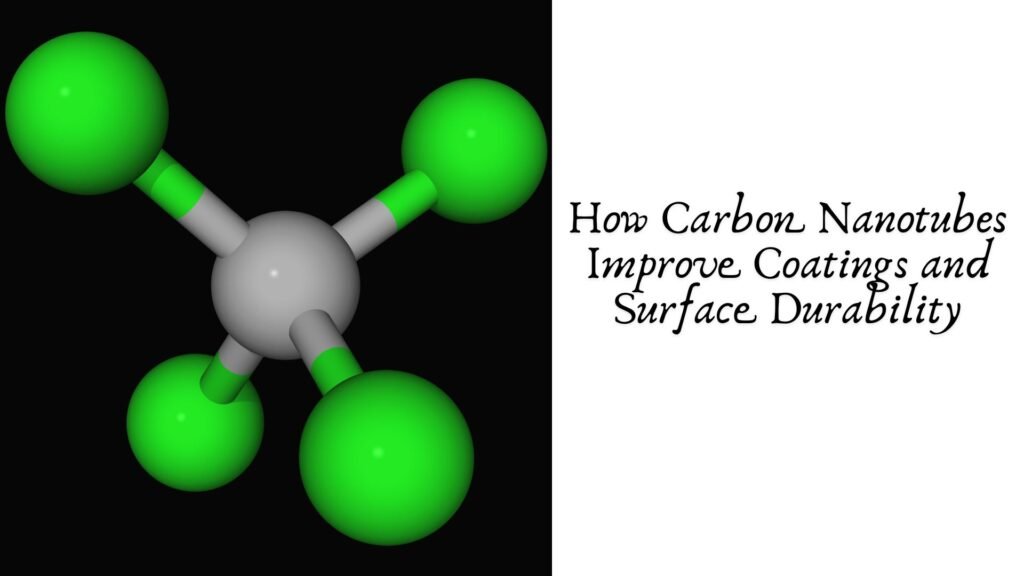In the world of material science, carbon nanotubes (CNTs) have emerged as a groundbreaking innovation that continues to redefine the limits of strength, conductivity, and resilience. One of the most promising applications of these nanostructures lies in surface coatings, where they significantly enhance mechanical strength, corrosion resistance, and thermal stability. As industries seek longer-lasting, high-performance surfaces, CNT-based coatings are rapidly gaining attention for their transformative impact on durability and performance.
Understanding Carbon Nanotubes (CNTs)
Carbon nanotubes are cylindrical molecules made of rolled graphene sheets, possessing extraordinary physical and chemical properties. They can be single-walled (SWCNTs) or multi-walled (MWCNTs), depending on the number of graphene layers. Their tensile strength, high aspect ratio, excellent thermal conductivity, and chemical stability make them ideal reinforcements for coatings across various industries.
Unlike conventional fillers or reinforcements, CNTs operate effectively even at low concentrations, meaning they can significantly improve a material’s properties without compromising its weight or flexibility.
Enhancing Mechanical Strength
One of the foremost benefits of integrating CNTs into coatings is the remarkable increase in mechanical strength. When properly dispersed in a polymer or metallic matrix, carbon nanotubes act as nanoscopic reinforcements, distributing stress more evenly across the surface.
- Improved hardness and scratch resistance: CNT-reinforced coatings can withstand high friction and abrasion, extending the lifespan of industrial tools and automotive parts.
- Crack prevention: Their high tensile strength helps prevent microcracks from forming and propagating under mechanical stress.
- Flexibility retention: Despite the improved hardness, CNTs maintain or even enhance flexibility, especially in polymer coatings.
Corrosion and Chemical Resistance
Corrosion remains a major challenge in sectors such as marine, oil and gas, and infrastructure. Traditional coatings can degrade over time due to exposure to oxygen, moisture, and harsh chemicals. CNTs provide an advanced barrier mechanism by:
- Reducing permeability: The intertwined nanotube network forms a dense, tortuous path that prevents the diffusion of water, oxygen, and corrosive ions.
- Enhancing electrochemical stability: CNTs’ chemical inertness helps maintain the integrity of coatings under aggressive conditions.
- Supporting anti-corrosive formulations: When combined with resins, CNTs improve adhesion and reduce delamination, resulting in superior corrosion protection for metals.
Thermal and Electrical Conductivity
CNTs possess exceptional thermal and electrical conductivity—properties that are particularly useful in coatings for electronics, aerospace, and energy applications.
- Heat dissipation: CNT-based coatings can efficiently transfer heat away from surfaces, protecting sensitive components and reducing thermal fatigue.
- Electrostatic discharge (ESD) control: In electronic and aerospace coatings, CNTs provide conductive pathways that prevent charge buildup, reducing the risk of damage from electrostatic discharge.
- De-icing and heating applications: CNT-enhanced coatings can be engineered for controlled heating under electrical input, making them useful in aviation and wind turbine systems.
UV and Weather Resistance
Exposure to ultraviolet (UV) radiation can degrade traditional coatings over time, leading to discoloration and cracking. CNTs can help extend the longevity of outdoor coatings by:
- Absorbing and dissipating UV radiation: Their carbon-based structure helps shield underlying layers from harmful UV exposure.
- Reducing photo-oxidative degradation: CNTs help maintain coating integrity by slowing down oxidative processes triggered by sunlight and environmental factors.
- Improving color and gloss retention: Surfaces remain visually appealing and structurally sound for longer durations.
Friction Reduction and Wear Resistance
In tribological (friction-related) applications, CNTs serve as solid lubricants. Their smooth, graphitic surfaces reduce the coefficient of friction between contact surfaces, leading to:
- Lower wear rates: Particularly in machinery, automotive parts, and aerospace components.
- Improved energy efficiency: Reduced friction means less energy loss during mechanical motion.
- Extended equipment lifespan: Surfaces remain smoother and more stable over time.
Application Areas of CNT-Enhanced Coatings
The superior performance of CNT coatings has opened up diverse industrial applications, including:
- Aerospace and Defense: Lightweight, high-strength coatings for aircraft and spacecraft surfaces.
- Automotive: Scratch-resistant, corrosion-proof coatings for car bodies and engine components.
- Electronics: Conductive coatings for printed circuit boards (PCBs) and sensors.
- Marine: Anti-corrosion and anti-fouling coatings for ships and offshore structures.
- Construction: Protective layers for steel and concrete exposed to harsh weather conditions.
Challenges and Future Prospects
Despite their remarkable potential, several challenges remain in the widespread adoption of CNT-based coatings:
- Dispersion issues: CNTs tend to agglomerate due to strong van der Waals forces, requiring advanced dispersion techniques for uniform coating properties.
- Cost of production: High-quality CNTs are still relatively expensive, though costs are gradually decreasing with technological progress.
- Environmental and health concerns: Ensuring safe handling and disposal practices is essential during manufacturing and application.
Looking ahead, ongoing research is addressing these issues through surface functionalization, hybrid nanocomposites, and scalable synthesis methods. The integration of CNTs with graphene, metal oxides, and polymers is paving the way for a new generation of smart coatings—capable of self-healing, sensing, and adaptive performance.
Conclusion
Carbon nanotubes represent a paradigm shift in the design and functionality of coatings. By significantly enhancing mechanical strength, corrosion resistance, conductivity, and environmental stability, they offer a versatile solution to some of the most persistent challenges in surface engineering. As research and manufacturing technologies advance, CNT-based coatings are expected to become a cornerstone of durable, high-performance materials across multiple industries.
In essence, the future of coatings lies in the nanoscale—and carbon nanotubes are leading the way toward surfaces that are not only tougher and more resilient but also smarter and more sustainable.







